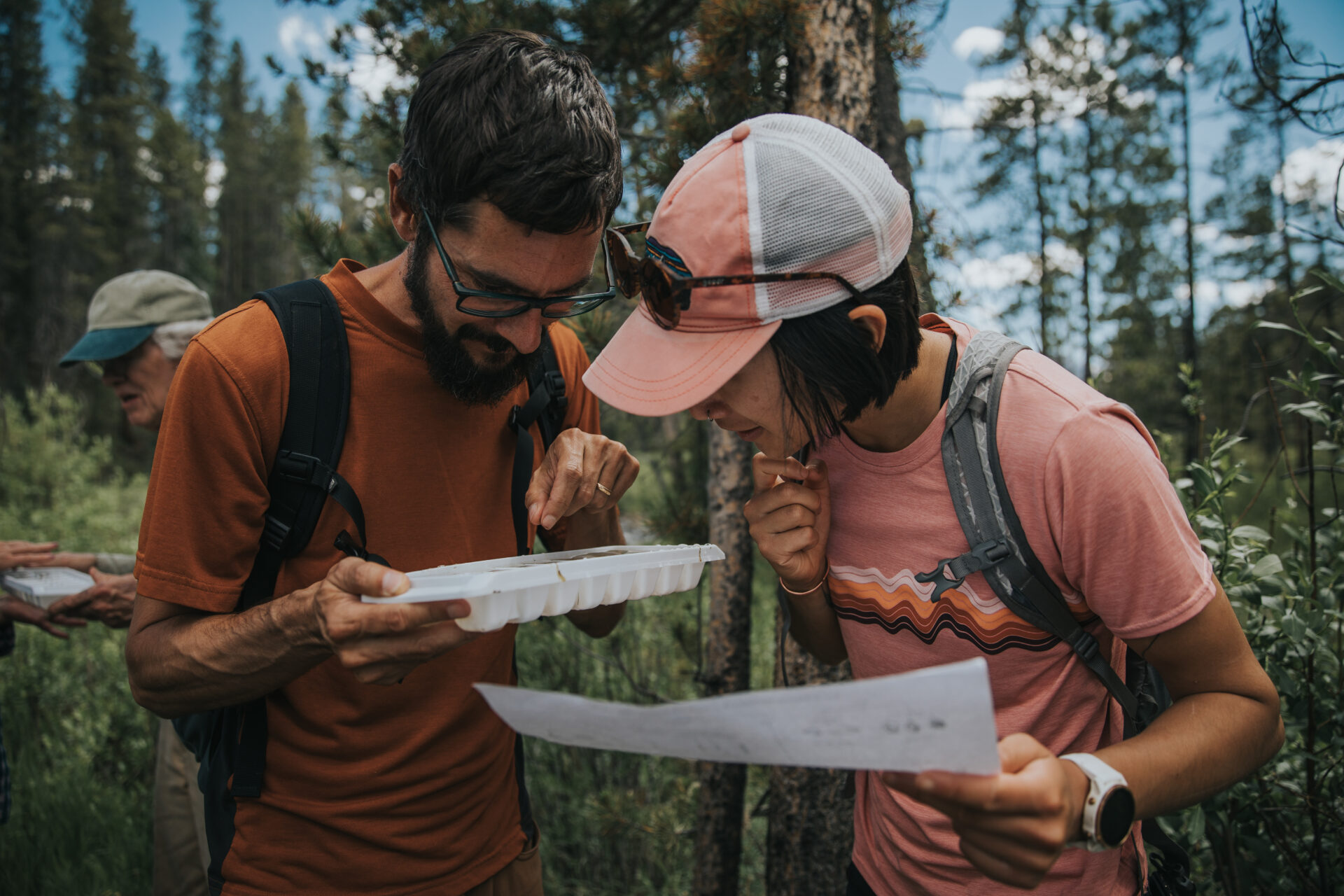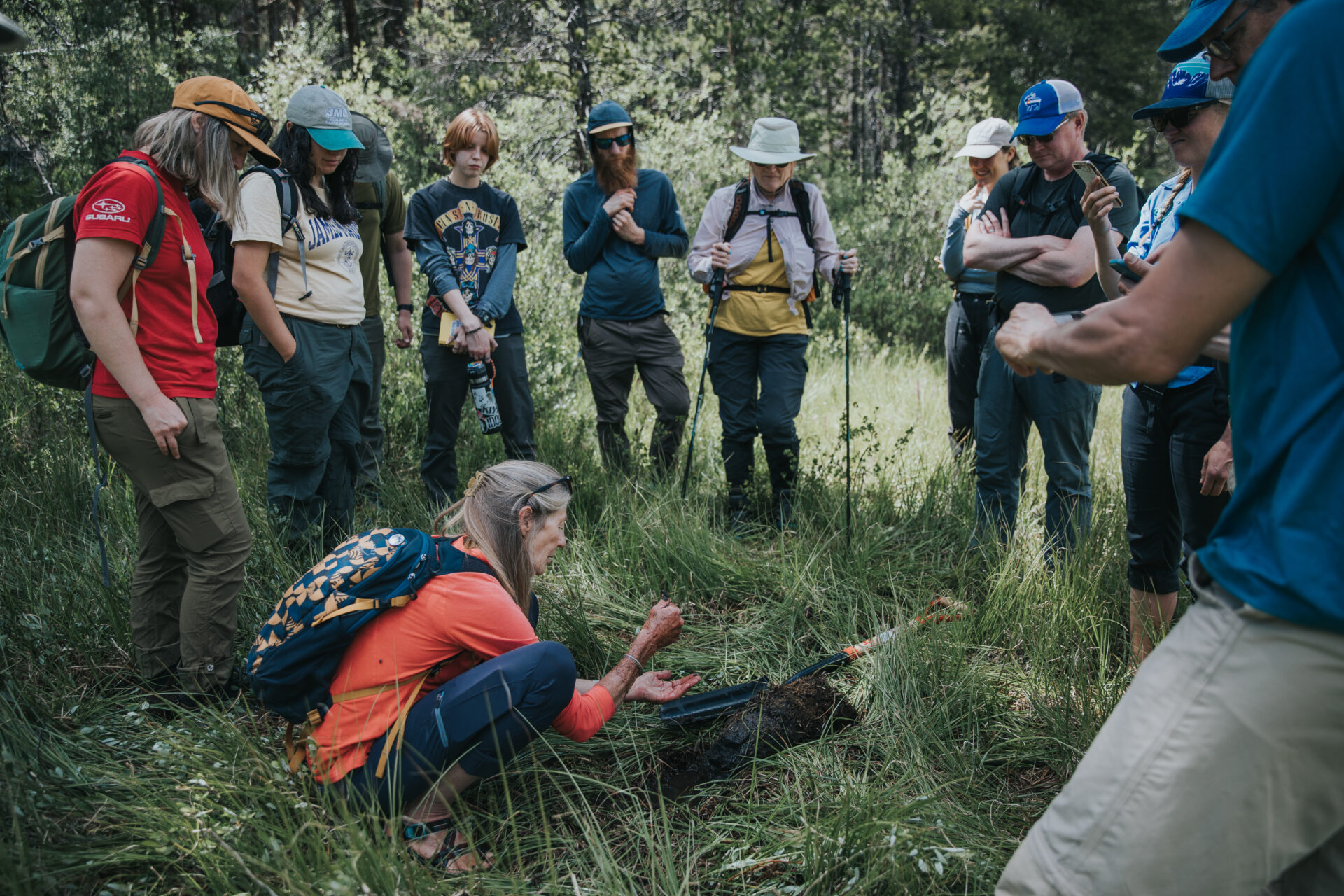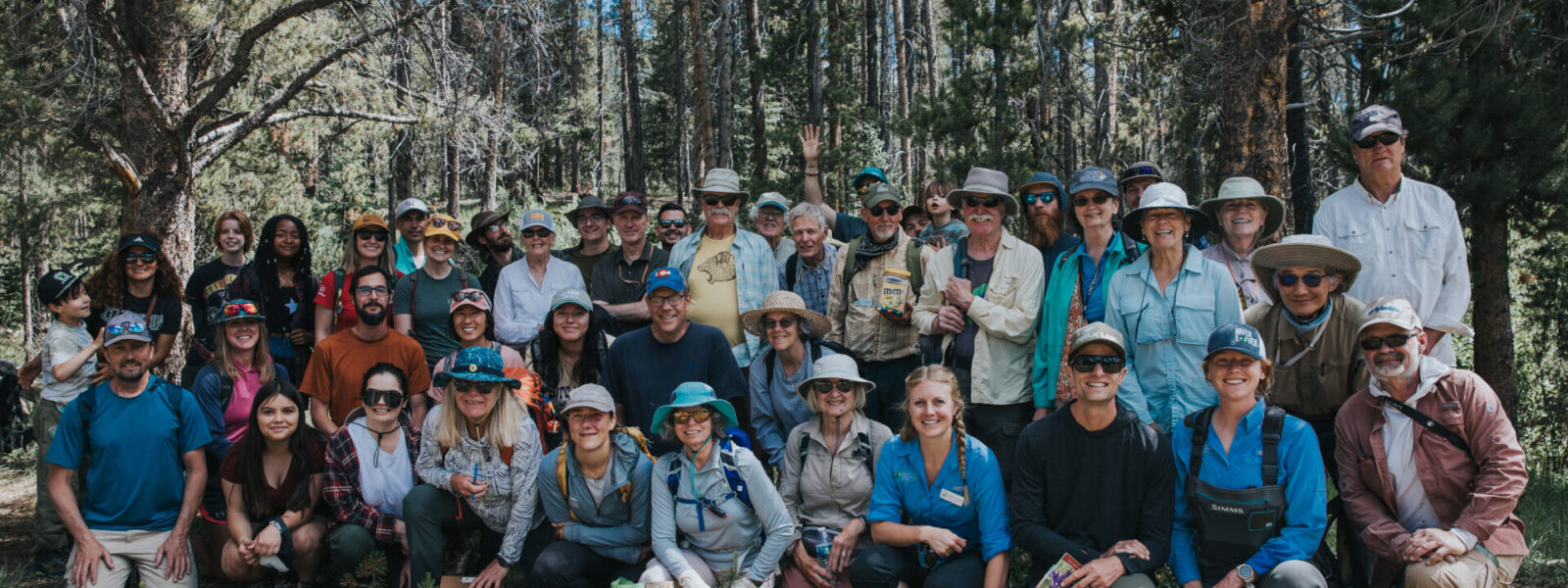On Saturday, July 8, Wilderness Workshop and Eagle River Watershed Council hosted experts from Colorado Natural Heritage Program, Walking Mountains Science Center and Roaring Fork Audubon to lead a “bio blitz” in Homestake Valley. Nearly 50 people participated in the community science day, which helped to inventory the range of birds, insects and plant species found in select areas of the Homestake Valley near Red Cliff.
Rose Sandell, the education and outreach coordinator at Eagle River Watershed Council, who helped to organize the event, said, “This is one of my all-time favorite events. We had participants of all ages and experience levels out exploring and learning together, and I think everyone really enjoyed the day and left feeling inspired”.
Homestake Valley is home to many different types of wetland habitats, including beaver dam wetlands, which are flooded lands due to the construction of dams by beavers; riparian corridors, which receive water due to the overtopping of streambanks; and fens, which receive water from shallow groundwater and snowmelt sources. Saturday’s event primarily focused on fen ecosystems.
Participants gathered on National Forest land in Homestake Valley and received guidance on minimizing impacts on the sensitive ecosystems before splitting into three groups. Each group then visited three stations where experts focused on topics such as fen conservation, macroinvertebrate identification and data capturing, using the app iNaturalist.
 Photo of participants identifying different benthic macroinvertebrates from Homestake Creek.
Photo of participants identifying different benthic macroinvertebrates from Homestake Creek.
The data collected by participants is uploaded to a database so that it can be considered when evaluating the conservation values of the area. More than 120 different species have been inventoried in the area as part of the ongoing bio blitz project in iNaturalist.
Locals throughout the region have been rallying for decades to protect Homestake from the possibility of future reservoir development that threatens to destroy local ecosystems like fens, which play a key role in climate resilience as major carbon sinks and can take 10,000 years to develop.
“Our hope is that the more we know about this special place, the better we are able to advocate for its protection, now and in the future,” said Michael Gorman, event organizer and campaign manager at Wilderness Workshop.
The US Forest Service is currently undergoing a rulemaking process which seeks to bolster policies on climate resilience and management of old growth forests. Wilderness Workshop and their partners believe that fens are another resource that should be protected for climate resilience.
In addition to being biodiversity hotspots, fens play an important role in climate change because they are a major sink for atmospheric carbon. “Protecting fens is critical to maintaining a carbon budget,” explains Delia Malone, an ecologist with Colorado Natural Heritage Program. “Fens have a huge amount of diversity of plant life. When we have more diverse plant communities, we have more diverse animal communities. Diversity enhances ecological and dynamic stability.”
 Photo of Malone with a piece of fen and explaining the importance of this ecosystem.
Photo of Malone with a piece of fen and explaining the importance of this ecosystem.
~~~~
Eagle River Watershed Council is a community-supported 501c(3) organization with the mission to advocate for the health of the Upper Colorado and Eagle River basins through research, education and projects. Contact the Watershed Council at (970) 827-5406 or visit erwc.org to learn more. To stay updated on opportunities with the Eagle River Watershed Council, please sign up for our e-newsletter at erwc.org.
Wilderness Workshop is a nonprofit advocacy organization based in Carbondale, CO, whose mission is to protect the wilderness, water and wildlife of Western Colorado’s public lands. Learn more at WildernessWorkshop.org. Visit the Homestake Valley page on the WW website for future updates.

